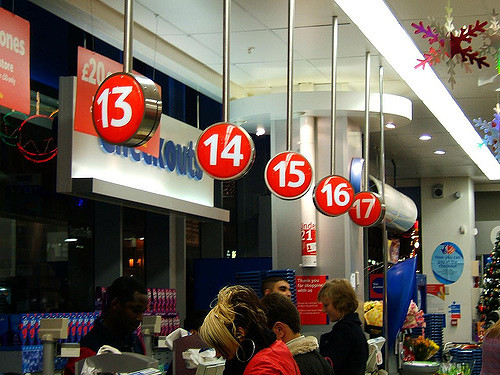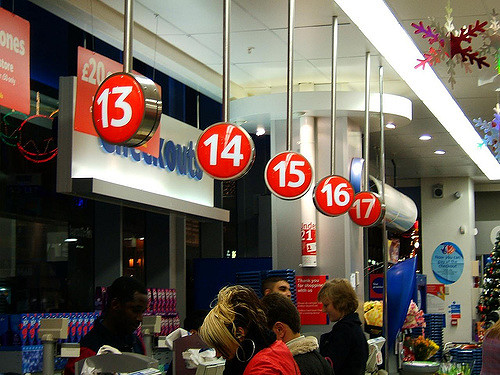
Lee Jordan
Even before data of the Ministry of Labor was published, market of interest rate futures showed 100% probability of rising interest rates at the US Federal Reserve meeting on December 13-14, said the Financial Times. Anticipation of November data on the labor market situation "was the last obstacle to December increase and now it has definitely been eliminated," said Luke Bartholomew of Aberdeen Asset Management: «Now is incredibly difficult to imagine what could stop the Fed."
Some analysts are expecting that Fed would act even more aggressively next year. This year, the rates will be raised just once (in December). In 2017, however, there would be four increases of 25 basis points each, says Paul Ashworth of Capital Economics. "If the new administration passes a large-scale package of fiscal stimulus measures [of the economy] in the first half, we expect the Fed to increase interest rates during the year by 100 b.p. As a result, the federal funding rate will reach 1.5-1.75% by the end of 2017". Now it is 0.25-0.5%.
Corrected data on GDP in the III quarter was published this week. It showed an increase of 3.2% year on year. Fed’s Chair Janet Yellen recently told about benefits of "the economy operating at high pressure", when a strong labor market leads to lower unemployment and higher wages. However, recent data, albeit positive in terms of employment growth, may seem not very satisfactory to the monetary authorities from the point of view of increasing income of Americans. Their average hourly earnings rose by 2.5% year-to-year in November, while average weekly - by 2%. Although rate of increase of salaries has been higher in the past two months than during the post-crisis years, they lag behind the pre-crisis given the same level of employment. So, in August 2007, hours and weekly earnings rose by 3.9% year on year each.
In comparison with October, hourly earnings fell by 0.1% with expected growth of 0.2%.
After election of Donald Trump as the US president on November 8, the dollar and Treasury yields rose sharply. Particularly, they were fueled by expectations of higher inflation as a result of promised economic incentives such as large-scale investments in infrastructure, reduction of profit tax and income tax. Analysts earlier told that given such low unemployment, new construction projects will help increase wages, and higher consumer spending will contribute to increased inflationary pressures. James Smith, an analyst of ING, called the November data on earnings "shocking." However, he believes that it will not prevent the Fed from tightening monetary policy in December and in 2017. "Weak data on wages may cause doubts among some supporters of soft policy among members of the Federal Open Market Committee - quoted by FT. -However, the report on employment would have to be truly catastrophic to prevent a rate hike in December. "
Continuing low rate of growth of salaries forced Shaun Osborne, Chief Currency Strategist at Scotiabank, doubt that the Fed will aggressively tighten monetary policy next year. Because of that, dynamics in 2017 will be moderate - agrees Gary Pollack, Bond Trader and Portfolio Manager at Deutsche Bank (quoted by The Wall Street Journal).
source: ft.com, wsj.com
Some analysts are expecting that Fed would act even more aggressively next year. This year, the rates will be raised just once (in December). In 2017, however, there would be four increases of 25 basis points each, says Paul Ashworth of Capital Economics. "If the new administration passes a large-scale package of fiscal stimulus measures [of the economy] in the first half, we expect the Fed to increase interest rates during the year by 100 b.p. As a result, the federal funding rate will reach 1.5-1.75% by the end of 2017". Now it is 0.25-0.5%.
Corrected data on GDP in the III quarter was published this week. It showed an increase of 3.2% year on year. Fed’s Chair Janet Yellen recently told about benefits of "the economy operating at high pressure", when a strong labor market leads to lower unemployment and higher wages. However, recent data, albeit positive in terms of employment growth, may seem not very satisfactory to the monetary authorities from the point of view of increasing income of Americans. Their average hourly earnings rose by 2.5% year-to-year in November, while average weekly - by 2%. Although rate of increase of salaries has been higher in the past two months than during the post-crisis years, they lag behind the pre-crisis given the same level of employment. So, in August 2007, hours and weekly earnings rose by 3.9% year on year each.
In comparison with October, hourly earnings fell by 0.1% with expected growth of 0.2%.
After election of Donald Trump as the US president on November 8, the dollar and Treasury yields rose sharply. Particularly, they were fueled by expectations of higher inflation as a result of promised economic incentives such as large-scale investments in infrastructure, reduction of profit tax and income tax. Analysts earlier told that given such low unemployment, new construction projects will help increase wages, and higher consumer spending will contribute to increased inflationary pressures. James Smith, an analyst of ING, called the November data on earnings "shocking." However, he believes that it will not prevent the Fed from tightening monetary policy in December and in 2017. "Weak data on wages may cause doubts among some supporters of soft policy among members of the Federal Open Market Committee - quoted by FT. -However, the report on employment would have to be truly catastrophic to prevent a rate hike in December. "
Continuing low rate of growth of salaries forced Shaun Osborne, Chief Currency Strategist at Scotiabank, doubt that the Fed will aggressively tighten monetary policy next year. Because of that, dynamics in 2017 will be moderate - agrees Gary Pollack, Bond Trader and Portfolio Manager at Deutsche Bank (quoted by The Wall Street Journal).
source: ft.com, wsj.com





